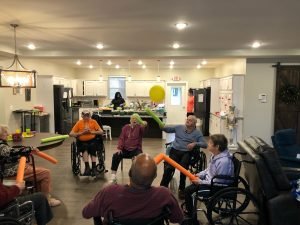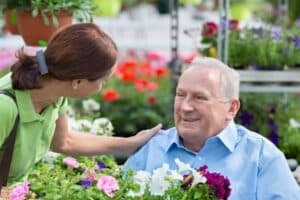
In today’s rapidly changing world, the gap between generations has become more pronounced than ever. Assisted living communities, once seen primarily as spaces for older adults, are now taking on a new role – that of bridging the generational divide. These communities are embracing innovative approaches to connect their residents with younger generations, leading to enriching experiences, meaningful relationships, and a sense of shared purpose. In this article, we explore how assisted living communities are fostering connections between residents and younger generations, reshaping the way we view aging and community engagement.
Changing Perspectives on Aging
Assisted living communities have shifted their focus from being purely care-oriented to creating vibrant and socially interactive environments. Recognizing the immense value of intergenerational connections, they are redefining the narrative of aging. These communities are not just places where older adults receive care; they are becoming spaces where residents can actively participate, contribute, and engage with individuals from different age groups.
Innovative Approaches
Intergenerational Programs: Assisted living communities are collaborating with local schools, colleges, and youth organizations to develop intergenerational programs. These programs bring together residents and young people for activities such as storytelling, arts and crafts, gardening, and technology workshops. This interaction fosters mutual understanding, breaks stereotypes, and promotes empathy.
Shared Learning: Residents are often a treasure trove of life experiences and wisdom. Many communities are leveraging this by organizing sessions where residents can share their stories and life lessons with younger generations. This not only imparts valuable knowledge but also creates a sense of purpose for the residents.
Volunteer Opportunities: Assisted living residents are actively participating in volunteer initiatives that benefit their local communities. Whether it’s knitting blankets for homeless shelters or participating in environmental clean-up projects, these activities allow residents to contribute meaningfully and feel a sense of accomplishment.
Technology Adoption: Younger generations are well-versed in technology, and assisted living communities are tapping into this expertise. Residents and younger individuals collaborate on projects that involve technology, such as digital photo albums, video calls with distant family members, and social media engagement.
Benefits of Intergenerational Connections
Reduced Isolation: Intergenerational interactions combat feelings of loneliness and isolation that older adults might experience. The friendships formed to provide a support network that enhances mental and emotional well-being.
Enhanced Well-Being: Engaging with younger generations stimulates cognitive function and encourages physical activity. Residents feel more motivated to participate in group activities and maintain an active lifestyle.
Sense of Purpose: Being involved in intergenerational programs gives residents a renewed sense of purpose. They feel valued and respected for their contributions and insights.
Breaking Stereotypes: Intergenerational connections break down stereotypes that both age groups might hold. Younger generations learn to appreciate the life experiences and wisdom of older adults, while residents understand the aspirations and challenges faced by younger individuals.
Looking Ahead
The trend of fostering connections between assisted living residents and younger generations is likely to gain momentum. As society continues to evolve, intergenerational collaboration will become even more crucial for building empathy, tolerance, and a stronger sense of community. Assisted living communities will continue to find innovative ways to facilitate these connections, embracing the benefits they bring to the lives of residents and the broader society.
Conclusion
Assisted living communities are not just spaces for aging; they are evolving into dynamic hubs of intergenerational engagement. By creating opportunities for residents to connect with younger generations, these communities are fostering meaningful relationships, promoting well-being, and challenging societal perceptions of aging. As we embrace the power of shared experiences and knowledge across generations, we’re taking a step towards building more inclusive, compassionate, and vibrant communities for all.





No comment yet, add your voice below!